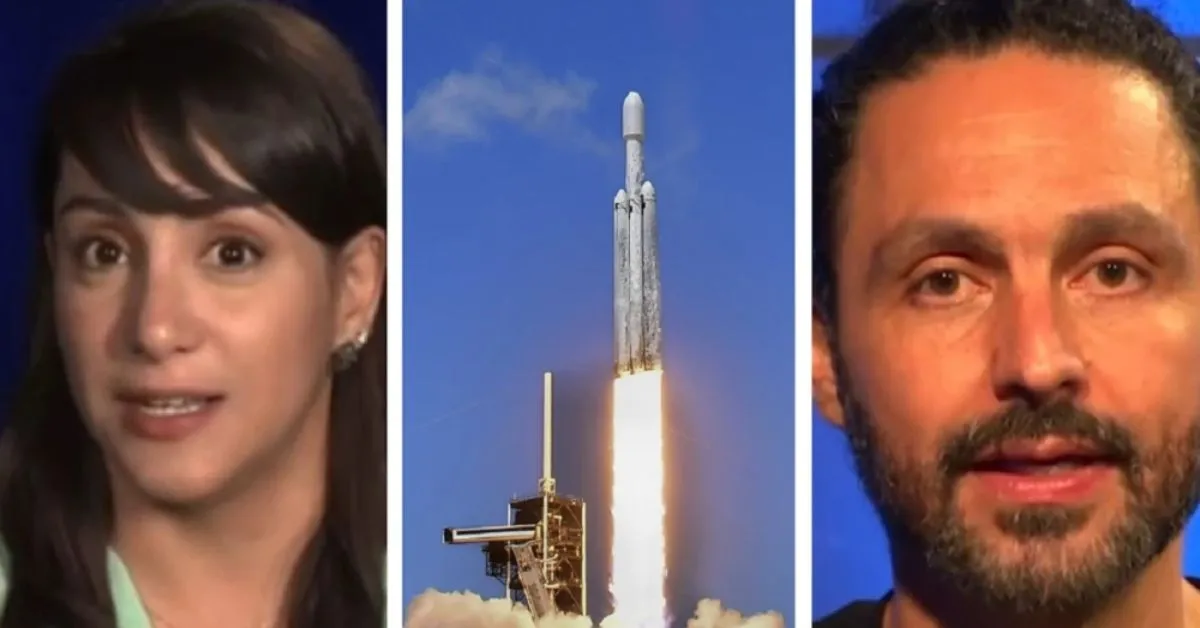
NASA’s unmanned spacecraft is already heading to Jupiter, on a trip that will take 5 and a half years. Two Colombians worked on this mission, whose objective is to analyze whether one of the moons of that planet, known as Europa, could harbor life.
>>> See more: NASA astronaut captures stunning images of Hurricane Milton from space
Europa Clipper is the largest spacecraft NASA has developed for a planetary mission. The moon Europa is believed to have a saline ocean under a thick layer of ice covering it.
Who are the Colombians who work at NASA?
Colombian physicist Ricardo Restrepo, with a master’s degree in aerospace engineering, a doctorate in trajectory design and optimization, He was part of the team that designed the trajectory that the Europa Clipper will carry out.
Taking into account Jupiter’s large magnetic field, scientists had to explore different trajectories until they found the most optimal one.
Ricardo Restrepo indicated that the trajectory is “the most optimal in terms of time, in terms of the fuel we need to maneuver the ship for the years that the science phase of the mission lasts and also minimizing the time of exposure to the ship’s radiation.”
Caracol News
The Colombian Luz María Martínez, for her part, She is a nuclear engineer and works in the natural space environments group, in the NASA radiation area.
“The team made several strategies to ensure that the spacecraft could survive for so long on Jupiter. “Electronic parts that are resistant to radiation were used and verified through many tests and experiments.”indicated Luz María Martínez.
After its arrival in Jupiter’s orbit, in 2030, 3 and a half more years of science and research will follow.

Caracol News
This was the takeoff of the NASA ship heading to Jupiter
Clipper was launched by a SpaceX Falcon Heavy rocket from the Kennedy Space Center in central Florida at 12:06 EST (16:06 GMT).
The historic mission to decipher whether “we are alone” in the universe will carry out about fifty flybys along this mysterious icy moon, 25 kilometers (16 miles) high, to determine if Europe has favorable living conditions.
For about four years the spacecraft will send clues to scientists about the astrobiological potential of habitable worlds beyond Earth, but the mission could be extended as did Galileo, which explored the icy surface of Europa more than 20 years ago.
The US space agency explained that the ship, 5 meters high and 30.5 meters wide, It will travel 2.9 billion kilometers to reach Jupiter in about six years, and then it will take one more to adjust its orbit and begin its studies in 2030.
The Europa Clipper mission seeks to understand the nature of the ice sheet, the interior ocean, and the composition and geology of this moon, according to NASA.
Europa, one of Jupiter’s best-known moons, apparently has “liquid water, the necessary chemistry and a source of energy”essential elements for the existence of life.
With its huge solar panels and radar antennas, Europa Clipper is the largest spacecraft developed by NASA for a planetary mission.
The design of the panels is crucial for energy supply because Europa Clipper operates in the Jupiter system, which is more than five times farther from the Sun than Earth.

CHANDAN KHANNA/AFP
Protection of instruments from Jupiter’s radiation
The ship is equipped with nine powerful scientific instruments.
And because the moon Europa is bathed in radiation trapped in Jupiter’s magnetic field, The ship’s instruments and other electronics will be encased within a thick-walled vault.
The idea is to shield oneself to go to Jupiter with a radiation protective dome that was developed and successfully used for the first time by NASA’s Juno spacecraft.
The walls of the vault, made of titanium and aluminum, act as a shield against most high-energy atomic particles, which dramatically slows the degradation of the ship’s electronic components.
The payload includes cameras and spectrometers to produce high-resolution images and maps of the composition of the surface and thin atmosphere of the moon Europa.
Also includes ice-penetrating radar to search for groundwater and a magnetometer and gravity measurements to unravel clues about its ocean and deep interior.
The spacecraft will also carry a thermal instrument to identify different locations of warmer ice and perhaps recent eruptions of water, as well as others to measure the composition of tiny particles in the moon’s thin atmosphere and its space environment.
The moon Europa, according to NASA, shows compelling evidence that an ocean of liquid water exists beneath its icy crust. Beyond Earth, Europa is considered one of the most promising places where there could be currently habitable environments in the Solar System.
>>> You may be interested in: NASA recorded a powerful X9-class solar flare: what does it mean?
Source: https://www.noticiascaracol.com/mundo/asi-fue-la-participacion-colombiana-en-nave-espacial-que-la-nasa-mando-a-luna-de-jupiter-rg10


